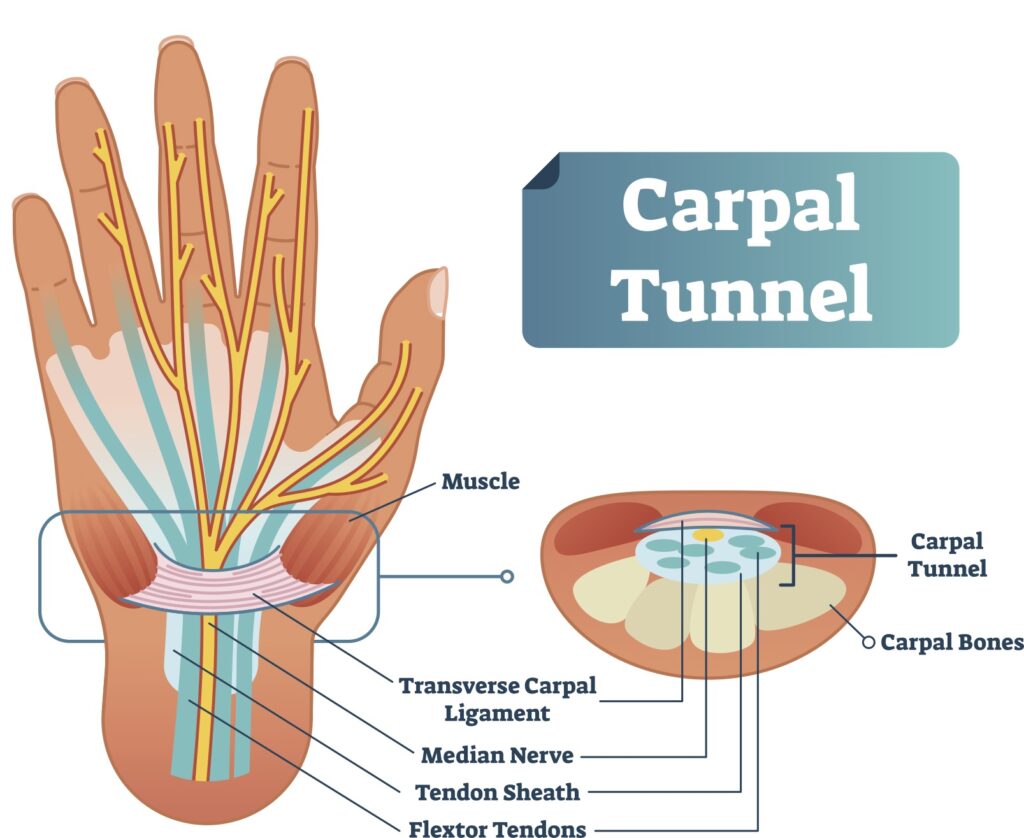Typically, carpal tunnel syndrome symptoms do get worse at night. It’s not uncommon to even wake up in the middle of the night from carpal tunnel. Read on to find out why the condition gets worse at night and how to sleep with carpal tunnel syndrome.
Why Does Carpal Tunnel Get Worse at Night?
The reason that carpal tunnel usually gets worse at night is because of inactivity. Naturally, when you sleep, you don’t tend to move. When there is no active muscle pump for an extended period of time, the tissue fluid in the arms starts to move around. The increase in fluid leads to carpal tunnel pressure, and that’s when symptoms can appear.

As you begin to fall asleep, there are fewer distractions. This can make you more aware of your body, and it may feel easier to dial into that pain than if you were properly awake and focused on something else.
How to Sleep with Carpal Tunnel Syndrome: 4 Tips
If you’re wondering how to sleep with carpal tunnel syndrome and are struggling to fall and stay asleep, here are four tips that may help.
1. Wear a Carpal Tunnel Syndrome Splint
If you’re having difficulty sleeping at night, your doctor may recommend wearing a splint to keep your arms straight. The splint helps to keep your wrists in a more neutral position and stops you from moving them in a way that puts added pressure on the median nerve.
2. Support Your Wrist and Arms
Swelling is one of the symptoms of carpal tunnel syndrome. One way to help reduce swelling at night is to sleep with your arms on a pillow so they are slightly raised. You can use a normal pillow or a body pillow to help keep your arms straight.
3. Avoid Bending the Arms
The median nerve travels through your arm. So, if you have your arms bent for long periods of time, it can irritate the nerve. Try to keep your arms straight when you sleep.
4. Start Sleeping on Your Back or Front
If you’re a side sleeper, you’re more likely to sleep with your shoulders rounded forward and arms and wrists bent. The pressure from your weight and the bent arms may aggravate carpal tunnel. If you can, avoid sleeping on your side.
Carpal Tunnel Release Surgery at The Harley Clinic
In general, once you start to get carpal tunnel syndrome symptoms, it’s unlikely to go away on its own without treatment. Treatment can involve a combination of surgical and non-surgical approaches, such as wearing a splint, exercises, and surgery.
If your symptoms get worse or you don’t have any improvement after a non-surgical approach, your doctor may recommend carpal tunnel release surgery. The procedure involves cutting through a ligament that’s pressing on the carpal tunnel. The aim of the surgery is to create more space for the median nerve and tendons to pass through the tunnel.
If you’re experiencing carpal tunnel syndrome symptoms, book a consultation today at the Harley Clinic to discuss your treatment options.
To read more about the top cosmetic procedures, we’ve pulled together the ultimate guide on plastic surgery statistics.













